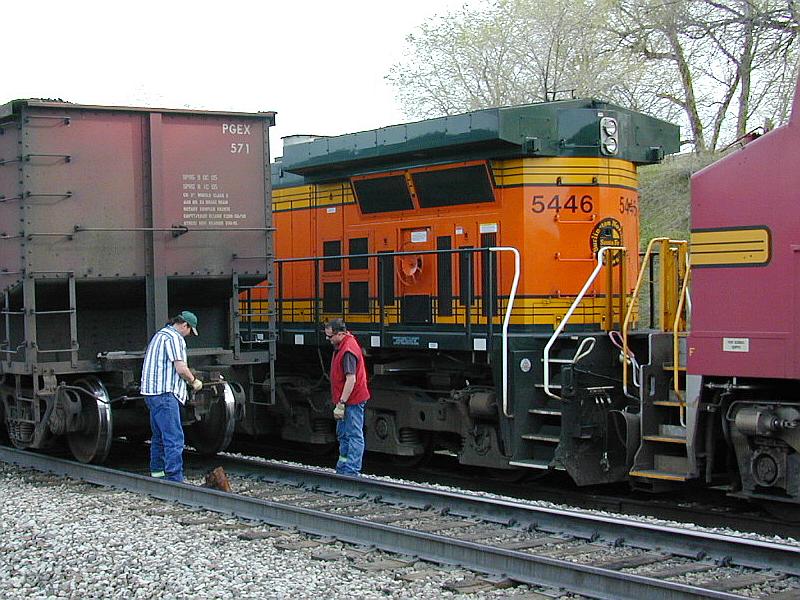
Did you do that? It is the words I don't like to hear. I was on a coal empty coming home to Sheridan, WY from Laurel, MT. 114 empties with 3 C44s. I had just met a westbound coal load at Aberdeen. The footage counter beeped at me telling us our last car had just entered the mainline. I opened the throttle on BNSF 5446 and its sisters to accelerate from the 25 mph siding speed up to what ever we could manage on the hill towards Parkman. We were to head in behind a grain empty that was already up there. I knew another westbound coal load was grinding up the other side of the hill and should be about to stop on top by now.Then those words came over the radio.
"Did you do that, Dan?"
"No."
It was the helper engineer talking to the coal train engineer. I didn't have to be on that train to know what those words meant. The words meant their train had just gone into emergency. When a coal train pulling Parkman hill goes into emergency you can bet it is in two pieces. It was. The coal train engineer said, "I see a break about 12 cars back."Well so much for a good meet. But it wasn't as bad as it could have been. They were draped over the top and almost stopped at the west CTC switch when it happened. The helpers did not clear the east CTC switch but the train did. The dispatcher gave the helpers permission for a reverse move back down the hill from their current location so the grain empty in the siding ahead of me could then depart. The coal train crew found no hammer or chisel on their three MACs so I volunteered our assistance. I pulled into the siding and spotted the rear of our lead C44 next to the broken knuckle. A bracket near the MU air hoses held a spare knuckle. No sense in lugging one of those things any farther than necessary. We also had a hammer and chisel.

While the coal train conductor and my conductor busied themselves changing out the knuckles I dutifully did my part by taking pictures. Hey if you think it was not work climbing that hill you are mistaken.
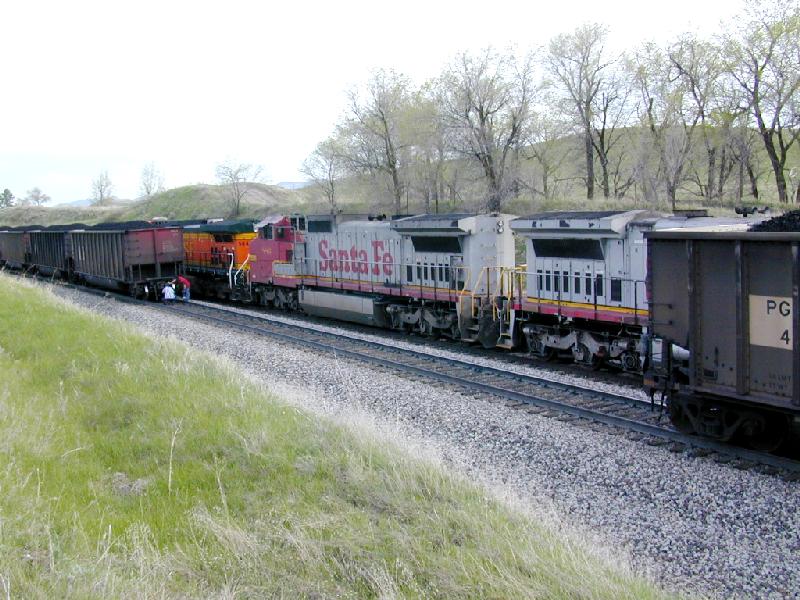
So why did it break? I doubt the coal train engineer was pulling more than 1 or 2 throttle at that location. He was only about 8 or 10 car lengths from stopping at the red absolute guarding me coming up the hill. The broken knuckle did show rusty signs of an old fracture. It was probably helped along by the helper engineer throttling down a little bit too quickly. Just my two cent opinion. Yes, folks, that little bit of silver colored metal is all that holds a train together.

The Day Before. The day before I took a grain train up to Laurel. It had 114 loads, 14850 tons, and three C44s. We were train number 5 in a 6 train fleet of westbounds. We had to meet 5 eastbounds. One of the helpers croaked going up Parkman. An SD60M tripped the Ground Relay and would re-trip each time it was reset. The helper engineer tried cutting out traction motors but it did not help. So we struggled up the hill with only one good old SD40-2 pushing. God bless the SD40-2s. Those C44 aren't bad either for a modern high-tech marvel. Luckily the train was relatively light for a unit train. If it had been a 17,000 tonner we would not have made it.
Some figures from the Locomotive Monitor screen on the BNSF 5433.
- Speed = 11 mph.
- Gross Horsepower = 4509.
- Alternator Volts = 343.
- Alternator Amps = 8819 = 1469 amps average on each of the 6 traction motors.
- Water temperature = 172 degrees F.
- Oil temperature = 206 degrees F.
- Traction Motor temperature = 167 degrees Celcius. That is 333 degrees F!
After cutting the helpers off at Parkman we rolled down to Aberdeen to meet two eastbounds. I stopped on the main behind the mid-siding crossing to wait for the meets to get close.
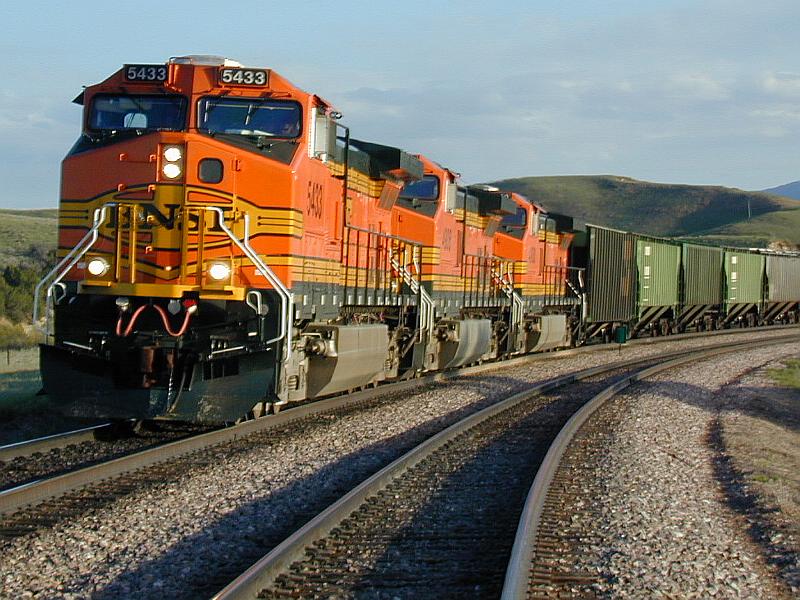
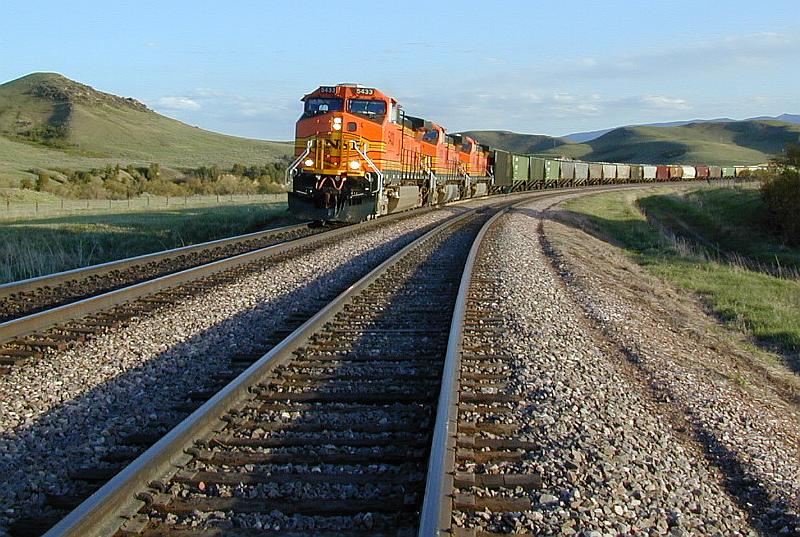
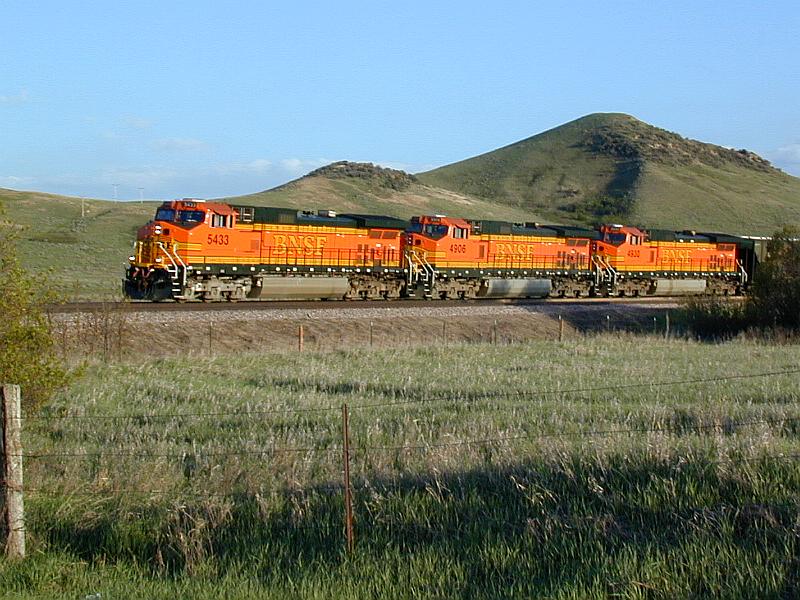




| Return to Tales index | My Home Page | E-Mail me |
Created 05-11-2001
Updated 10-21-2001